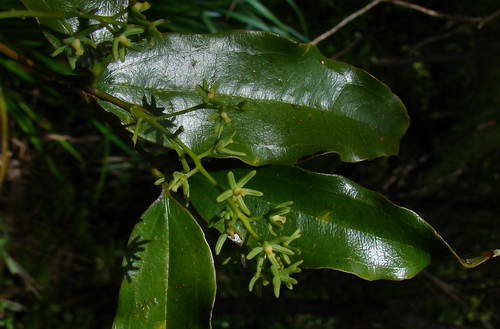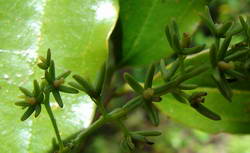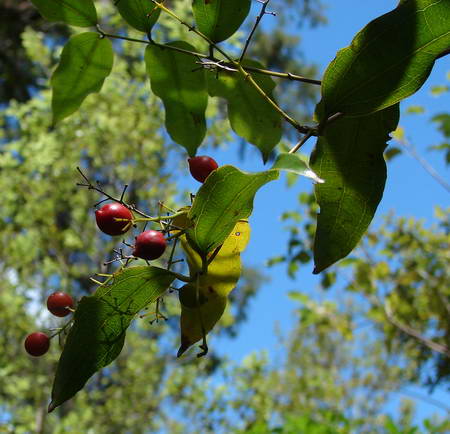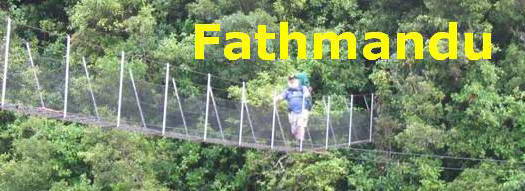Ripogonum scandens
J. R. et G. Forst. Char. Gen. Pl. 1776,
50, t. 25. (Smilacaceae)
Supplejack, Karaeo
Synonyms
Smilax ripogonum Forst. f. Prodr. 1786, 70.
Derivation: Rhips (Gk) = wickerwork; gonia = corner, joint; scandens = climbing
Supplejack vines were reputed to have been a standard source for the canes used to administer corporal punishment in New Zealand secondary schools. I never saw one used for this purpose in nearly twenty years on the job. They'd have been too heavy and done too much damage. I did have a 1.2m piece of supplejack I used for a blackboard pointer, though.
Canes were typically offcuts - of cane, not supplejack - obtained from the Blind Institute's craft shop in Parnell at 50 cents a bundle. (I was once asked by a group of fourth form lads during a playground conversation where canes came from. When I told them, there was a moment's silence, then one lad replied, "Well, then, that's the last time I collect for Braille Week.")
Graeme Haskell, a Whangarei domestic ware potter I used to buy from during the 70s, used supplejack vines as handles for his teapots. Small vines were cut to length and steamed to reshape them, then fastened with flax or cord.

9 December 2006, Rangemore Track, Waitakere Ranges
I don't normally get to see leaves and fruit of the supplejack, just a few canes (!) here and there, or the odd thicket of them, as they head for the light up above. However a couple of fallen trees on the Rangemore track brought down to eye level their supplejack passengers.

9 December 2006, Rangemore Track, Waitakere Ranges
Chatham Island plants have yellow flowers, while mainland plants tend to have uniformly green ones

9 December 2006, Rangemore Track, Waitakere Ranges
The berries are a favoured food for birds.
NZ Flora Information
Family: Smilacaceae
Genus: Ripogonum
Species: Ripogonum scandens
|

